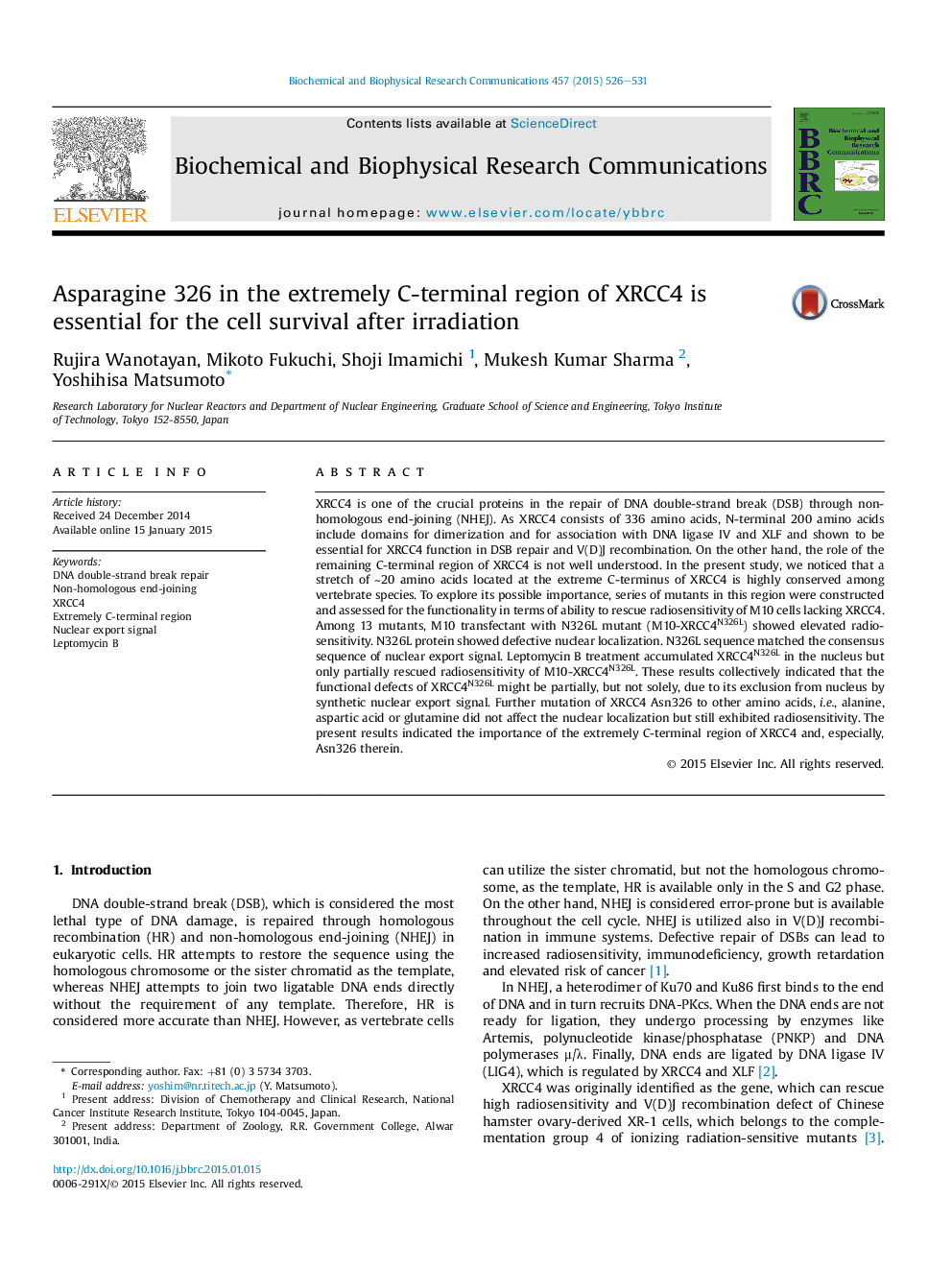| Article ID | Journal | Published Year | Pages | File Type |
|---|---|---|---|---|
| 10752517 | Biochemical and Biophysical Research Communications | 2015 | 6 Pages |
Abstract
XRCC4 is one of the crucial proteins in the repair of DNA double-strand break (DSB) through non-homologous end-joining (NHEJ). As XRCC4 consists of 336 amino acids, N-terminal 200 amino acids include domains for dimerization and for association with DNA ligase IV and XLF and shown to be essential for XRCC4 function in DSB repair and V(D)J recombination. On the other hand, the role of the remaining C-terminal region of XRCC4 is not well understood. In the present study, we noticed that a stretch of â¼20 amino acids located at the extreme C-terminus of XRCC4 is highly conserved among vertebrate species. To explore its possible importance, series of mutants in this region were constructed and assessed for the functionality in terms of ability to rescue radiosensitivity of M10 cells lacking XRCC4. Among 13 mutants, M10 transfectant with N326L mutant (M10-XRCC4N326L) showed elevated radiosensitivity. N326L protein showed defective nuclear localization. N326L sequence matched the consensus sequence of nuclear export signal. Leptomycin B treatment accumulated XRCC4N326L in the nucleus but only partially rescued radiosensitivity of M10-XRCC4N326L. These results collectively indicated that the functional defects of XRCC4N326L might be partially, but not solely, due to its exclusion from nucleus by synthetic nuclear export signal. Further mutation of XRCC4 Asn326 to other amino acids, i.e., alanine, aspartic acid or glutamine did not affect the nuclear localization but still exhibited radiosensitivity. The present results indicated the importance of the extremely C-terminal region of XRCC4 and, especially, Asn326 therein.
Keywords
Related Topics
Life Sciences
Biochemistry, Genetics and Molecular Biology
Biochemistry
Authors
Rujira Wanotayan, Mikoto Fukuchi, Shoji Imamichi, Mukesh Kumar Sharma, Yoshihisa Matsumoto,
